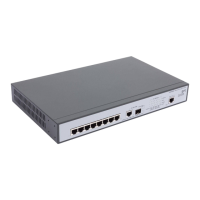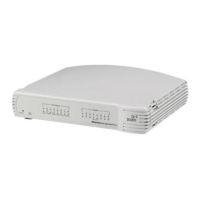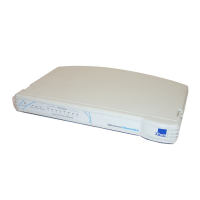92 CHAPTER 4: MANAGING DEVICE SECURITY
■ Source IP Address — If selected, enables matching the source port IP
address to which packets are addressed to the rule, according to a
wildcard mask. The field value is either user defined or Any. If Any is
selected, accepts any source IP address and disables wildcard mask
filtering.
■ Wild Card Mask — Defines the source IP address wildcard mask.
Wildcard masks specify which bits are used and which bits are
ignored. A wildcard mask of 255.255.255.255 indicates that all the
bits are important. A wildcard mask of 0.0.0.0 indicates that no
bits are important. For example, if the source IP address is
149.36.184.198 and the wildcard mask is 255.255.255.0, the first
three bytes of the IP address are matched, while the last eight bits
are ignored. For the source IP address 149.36.184.198, this
wildcard mask matches all IP addresses in the range 149.36.184.0
to 149.36.184.255. A wildcard mask must not contain leading
zeroes. For example, a wildcard mask of 010.010.011.010 is
invalid, but a wildcard mask of 10.10.11.10 is valid.
■ Destination IP Address — If selected, enables matching the
destination port IP address to which packets are addressed to the rule,
according to a wildcard mask. The field value is either user defined or
Any. If Any is selected, accepts any destination IP address and disables
wildcard mask filtering.
■ Wild Card Mask — Indicates the destination IP Address wildcard
mask. Wildcards are used to mask all or part of a destination IP
Address. Wildcard masks specify which bits are used and which
bits are ignored. For more details, refer to the description for
wildcard masks under Source IP Address.
■ Match DSCP — Matches the packet DSCP value to the ACL. Either
the DSCP value or the IP Precedence value is used to match packets to
ACLs. The possible field range is 0-7.
■ Match IP Precedence — Matches the packet IP Precedence value to
the rule. Either the DSCP value or the IP Precedence value is used to
match packets to ACLs. The possible field range is 0-63.
■ Action — Defines the ACL forwarding action. The options are as
follows:
■ Permit — Forwards packets which meet the ACL criteria.
■ Deny — Drops packets which meet the ACL criteria.

